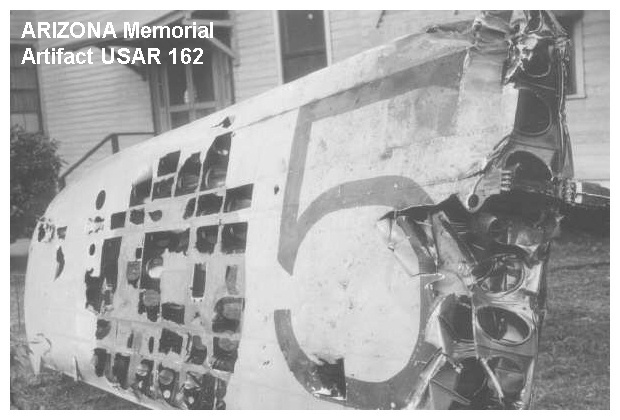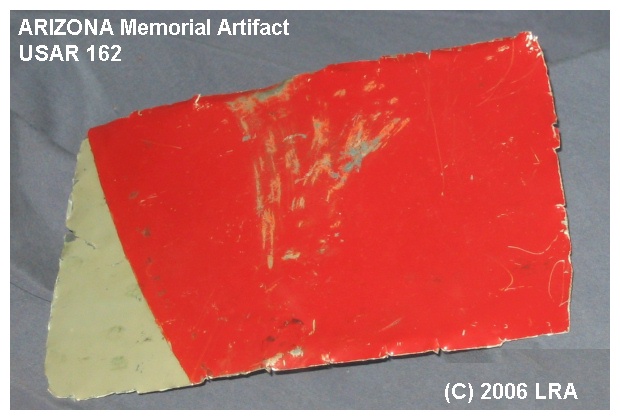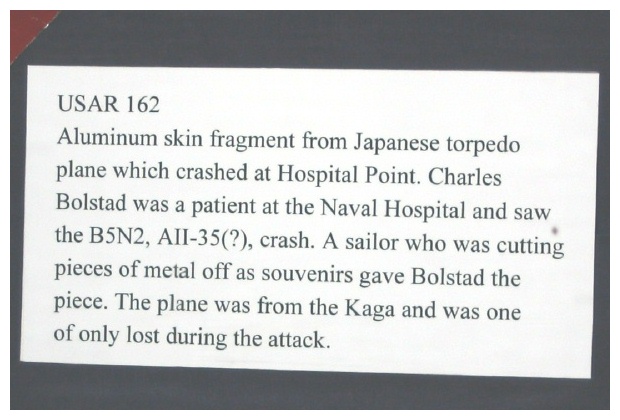by James Lansdale
Introduction
I recently completed a ten-day trip (4 ~ 14 December 2006) to the Hawaiian
Islands in order to investigate the Pearl Harbor Japanese aircraft crash-sites,
records, and artifacts. While visiting the island of Kaua'i (east
of and adjacent to Ni'ihau) I met with local dive-masters and representatives
of the Robinson Family Sugar Plantation and conducted interviews with members
of the University of Hawaii Oceanography Department as well as the United
States Coast Guard marine survey team regarding the details of two alleged
Japanese Zero crash-sites within the area encompassed by the Kaulakahi
Channel between the islands of Ni’ihau and Kaua’i.
On the island of O’ahu I was able to meet with members and curators
of three museums that contain records of crash-sites and/or artifacts related
to Japanese aircraft downed during the attack on Pearl Harbor. I
was most impressed by the newly opened Pacific Aviation Museum aircraft
presentations. One outstanding display, recreates the Ni’ihau Island
crash-site of the HIRYU-based Zero fighter flown by Shigenori NISHIKAICHI.
It is complete and includes most of the actual remaining fragments from
this famous Zero fighter as they lay, until a few months ago, on Robinson
Family land! The Fort DeRussy Army Museum has records and several remains
of Aichi kanbaku that were downed during the attack. The Arizona
Memorial has records and artifacts on display, as well as in their archives,
of several different Japanese aircraft, including Aichi kanbaku and Nakajima
kanko.
This series of articles will present the facts and information gathered
during this study of several Japanese crash sites, records, and the aircraft
artifacts themselves that were recovered from those locales.
On display in the ARIZONA Memorial Museum is a piece from the lower wing of a Nakajima Type 97 Carrier Attack-Bomber (kanko) based on the KAGA that crashed during the attack on Pearl Harbor near a U.S. Navy hospital and which became known as the “Hospital Kate.” ARIZONA Memorial historian, Daniel MARTINEZ, believes it may have become the “most souvenired” crash remains from the Japanese attack. It may even be possible to match this fragment with the holes in the wing lower surface pictured below!

When this relic was photographed under the lighting conditions within the ARIZONA Memorial display, the olive-green area surrounding the hinomaru appears more pale and green than the true color of this relic under natural lighting conditions.

Historian Daniel MARTINEZ and ARIZONA Memorial Curator, Scott PAWLOWSKI assisted in the relic color analyses conducted on the relics held by the Memorial. The “Hospital Kate,” relic, or artifact “USAR 162,” has two colors that were examined and compared to JPMA 2005-C color samples. The “olive-green” paint is a glossy paint color that is a very close match to a color between JPMA C27-50D and JPMA C27-60D (Munsell 7.5Y 5/2 ~ 7.5Y 6/2; approximately 7.5Y 5.5/2). The hinomaru red is a glossy-red close to JPMA C05-40V (Munsell 5R 4/12). No primer coat appears evident between the outer layer of paint and the natural metal.
The history of relic “USAR 162” is contained in the following placard:

Greg SPRINGER conducted a study of other relics souvenired from the same kanko crash site that are being “held in storage by the Admiral Nimitz National Museum of the Pacific War in Fredricksburg Texas.” These pieces may be viewed in Greg’s excellent article at
http://www.j-aircraft.com/research/gregspringer/b5n2_kate_artifacts.htm
It is almost certain that one of the two known Nakajima kanko main-data plates in other collections was removed from the "Hospital Kate" and it is very likely that this particular kanko, (one of the five lost from the KAGA on 7 December 1941) is Nakajima S/N 9111!
Jim Lansdale
[Part 1] [Part 2] [Part 3] [Part 4] [Part 5] [Part 6] [Part 7]
Credit: Arizona Memorial/Daniel Martinez and Admiral Nimitz National Museum of the Pacific War /Greg Springer